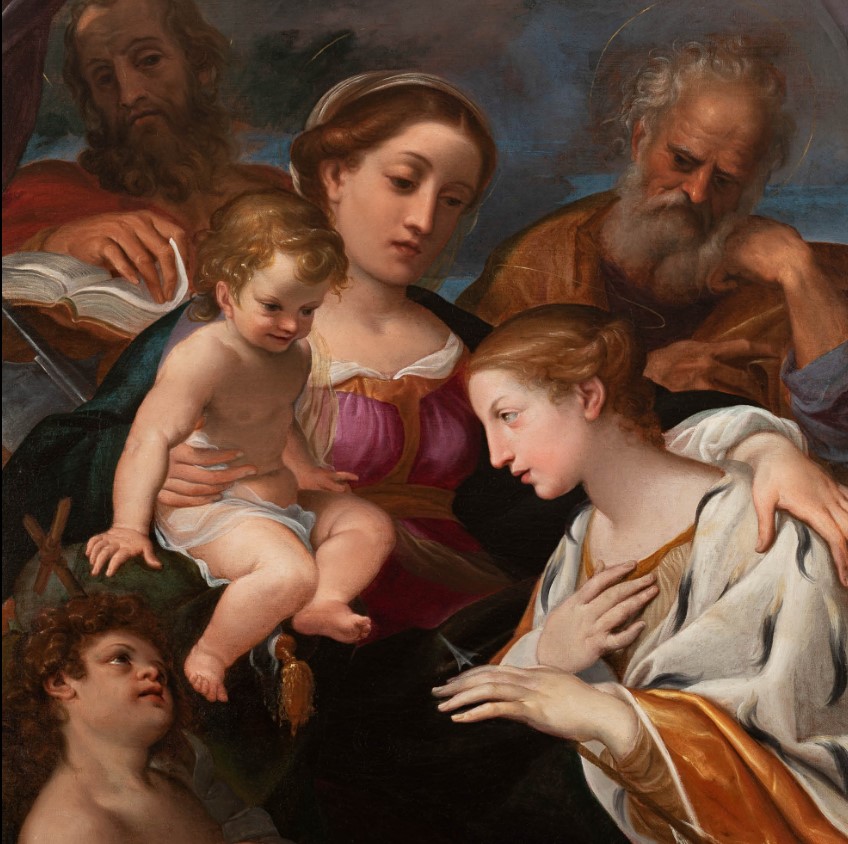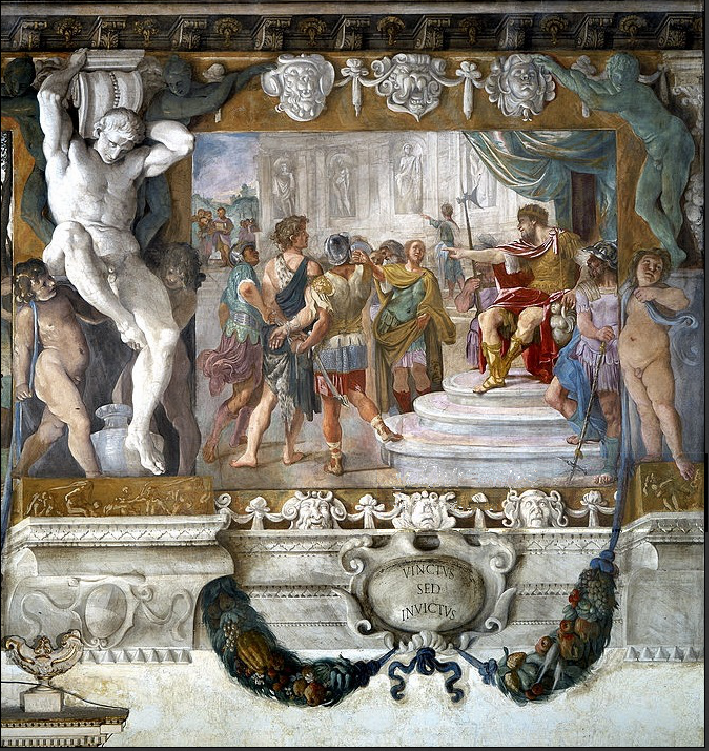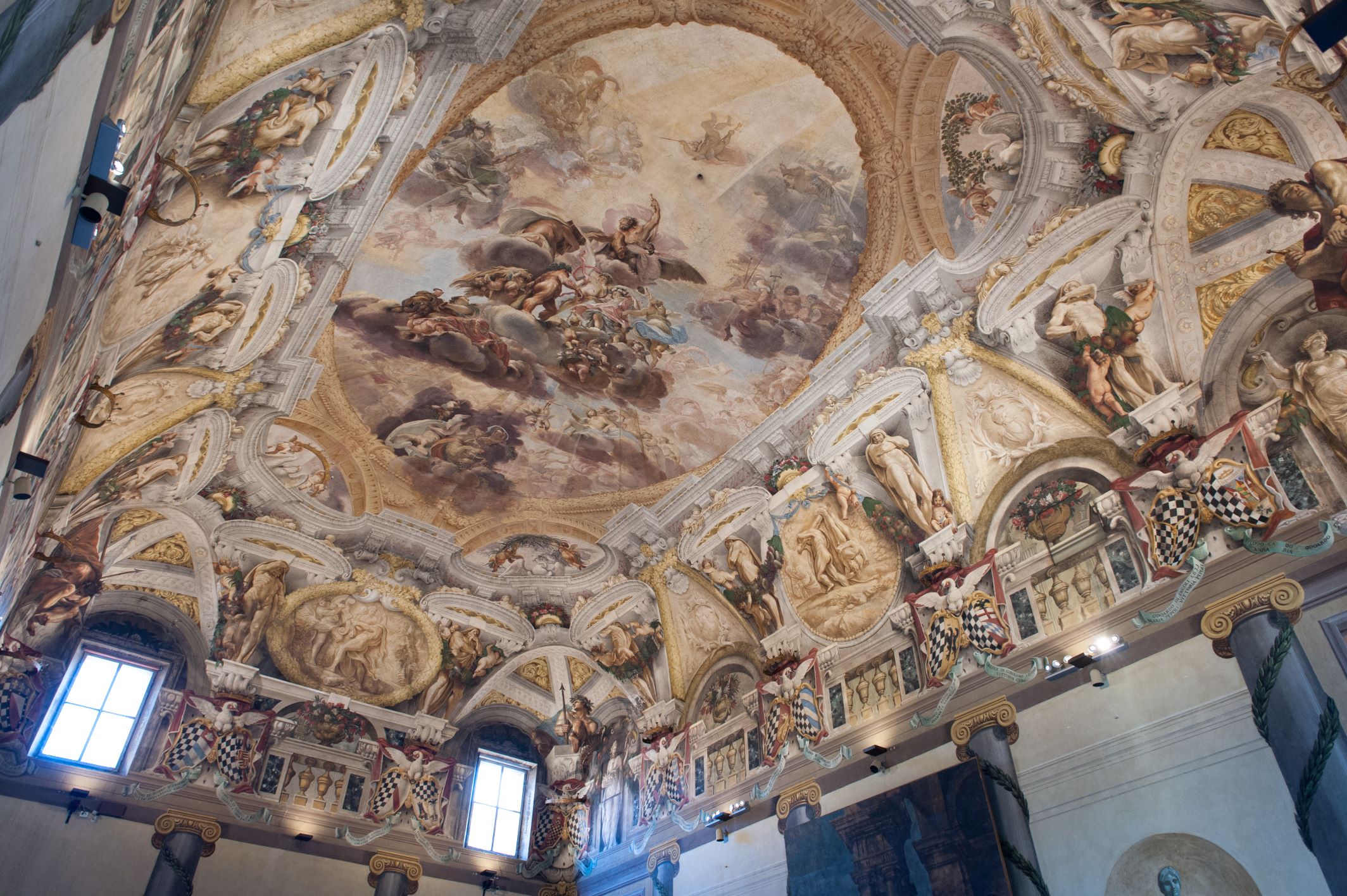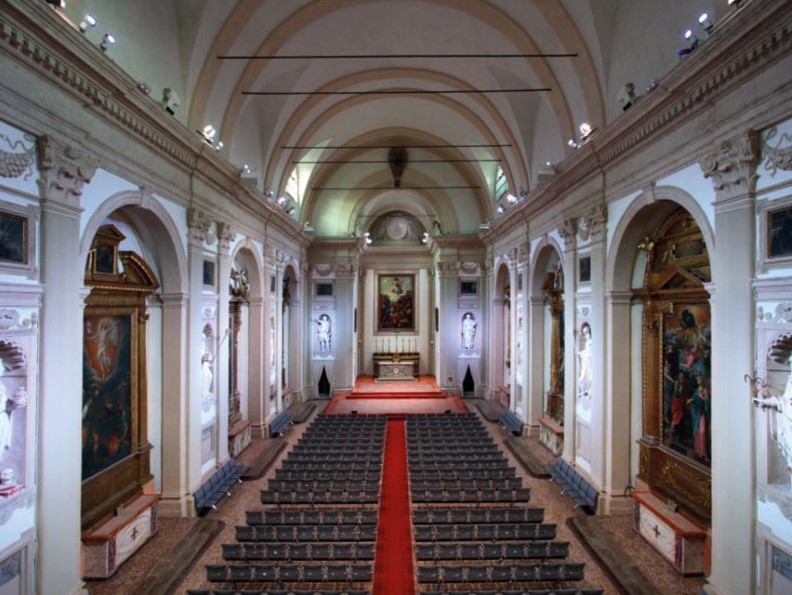The Carraccis in Bologna
Updated on 20 May 2024 From Bologna Welcome
Bologna is a must for anyone wishing to discover the paintings of the Carraccis and the many masterpieces they bequeathed to the city, making it a key player in a crucial phase of Italian and international art history.
The Carraccis (the first artistic collective in history), Ludovico (1555-1619), Annibale (1560-1609) and Agostino (1557-1602), founders in the 1580s of the Accademia degli Incamminati, literally a school of art and life, were credited with reshaping painting with a return to the "natural" datum and, therefore, to the study of truth and drawing, as opposed to the refined, intellectual phase of the Mannerist period.
So where does one start to discover the frescoes, canvases and majestic altarpieces?
Located in the city's university area, at 56 Via delle Belle Arti, the Pinacoteca Nazionale di Bologna now boasts a new acquisition in the pictorial heritage bequeathed by the Carraccis. The work in question is Ludovico Carracci's Holy Family with Saints John, Ursula and Matthias. A room painting of the highest quality, originally belonging to the Bolognese Bonfiglioli collection and destined for private devotion, it joins the group of twenty-three Carracci canvases already displayed in the Pinacoteca, which currently houses the largest number of works by the Carraccis.

It was at Palazzo Fava, in Via Manzoni 2, that the cousins' artistic adventure began, with an initial work commissioned by Filippo Fava, the first important cycle of frescoes in the three rooms on the main floor, The Stories of Jason and Medea and The Stories of Aeneas from 1584.
The paintings depict the stories of the Argonauts, through the adventurous journey of the 50 heroes who, on board the ship Argo, sailed into hostile lands to regain the Golden Fleece. One of the greatest art scholars of the 20th century, Roberto Longhi, described the work as being "inferior only to the Sistine Chapel". Among the panels is the episode of Medea's Night Charms, with the sorceress purifying herself at the stream under the moon's rays, defined as the first modern nude in art history by art historian Andrea Emiliani.
At Palazzo Sampieri Talon, Strada Maggiore 24, the Carraccis worked together for the last time between 1593 and 1594 to paint the fresco cycle The Stories of Hercules . Four scenes out of a total of six are dedicated to the myth of Hercules, and not accidentally, as in the 16th century, the demi-god was taken up several times as a symbol of virtue defeating vice. The scenes are characterised by striking perspective views, so that the ceiling space could appear even larger, and are reminiscent of the Stories of Ulysses by Mannerist artist Pellegrino Tibaldi (1527-1596), painted in Palazzo Poggi some forty years earlier, from which the Carraccis had doubtlessly drawn inspiration.
Another interesting cycle of paintings in the city historical-mythological context can be found in Palazzo Magnani, Via Zamboni 20. Here, the main hall of the upper floor is decorated with The Stories of the Founding of Rome (or Stories of Romulus and Remus), created between 1588 and 1591 at the behest of Lorenzo Magnani to celebrate his elevation to the senatorial rank

The rooms on the main floor of Palazzo Pepoli Campogrande, in Via Castigone 8, are currently home to a portion of the Quadreria Zambeccari, an ancient collection of paintings that the Zambeccari, an important Bolognese senatorial family, had collected during the 18th century, including works of great Emilian artists such as Ludovico Carracci. The Quadreria became part of the Pinacoteca's collections in 1884.
Located in Via Monte Grappa 15, the Church of Saints Gregory and Siro is home to two altarpieces by the Carraccis, the Baptism of Christ by Annibale Carracci from 1585, and St Michael Archangel and St George by Ludovico Carracci, dated 1600-1601. The upper part of the former, occupied by a choir of musician angels, supported by material clouds and dominated by the figure of God Almighty, is believed to strongly recall Correggio's style, more specifically the frescoes adorning the dome of Parma Cathedral.
The lunette under the vault in the Metropolitan Cathedral of St Peter in Via Indipendenza 9 features the Annunciation of Mary painted by Ludovico Carracci in the last year of his life, 1619.
The 1595 Adoration of the Shepherds, attributed to Agostino Carracci, decorateds the first chapel on the left in the Church of San Bartolomeo di Reno and Madonna della Pioggia, in Via Riva di Reno 124. The painting was damaged by fire during World War II bombings.

The Church of Santa Cristina della Fondazza, in Piazzetta Morandi 2, ranks among the most beautiful churches in the city, and is part of the Complex of Santa Cristina 'della Fondazza', founded around the middle of the 13th century by a group of Camaldolese nuns. The church is home to Ludovico Carracci's 1597 Ascension of Christ. The complex was restored in 2004 by the University of Bologna, and is now the seat of the Department of Arts.
The Church of Santa Maria Della Carità, in Via San Felice 64, features a single nave interior with some important paintings such as the Crucifixion with the Sorrowful and Saints Bernardino of Siena, Francis and Petronio, dated 1583, an early work by Annibale Carracci located in the first chapel on the left. According to the Bolognese historian Carlo Cesare Malvasia (in "Felsina Pittrice" of 1678), the painting was reproached for its excessive realism (due to the figure of Christ, the calloused feet of St. Francis and a general lack of compositional harmony), which modern critics regarded as a first step towards breaking away from the late Mannerist schemes.
The Cloister , part of the Monumental Complex of San Michele in Bosco, in Via Pupilli, now predominantly converted into the Rizzoli Orthopaedic Institute, is named after the famous frescoes painted between 1605 and 1606 by Ludovico Carracci, Guido Reni and other members of the Accademia degli Incamminati. Unfortunately, the cloister cycle, although painted on walls, was not laid out in fresco, but rather through an experimental application of the oil-on-wall technique. The choice turned out to be unsuitable for the climatic conditions of the location, and the paintings were quickly ruined. However, tne cloister cycle is described by sources as one of the great masterpieces of Ludovico Carracci and his school, among the splendours of Bolognese painting.
